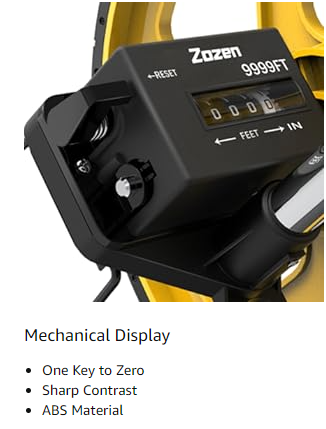
-
 Afrikaans
Afrikaans -
 Albanian
Albanian -
 Amharic
Amharic -
 Arabic
Arabic -
 Armenian
Armenian -
 Azerbaijani
Azerbaijani -
 Basque
Basque -
 Belarusian
Belarusian -
 Bengali
Bengali -
 Bosnian
Bosnian -
 Bulgarian
Bulgarian -
 Catalan
Catalan -
 Cebuano
Cebuano -
 Corsican
Corsican -
 Croatian
Croatian -
 Czech
Czech -
 Danish
Danish -
 Dutch
Dutch -
 English
English -
 Esperanto
Esperanto -
 Estonian
Estonian -
 Finnish
Finnish -
 French
French -
 Frisian
Frisian -
 Galician
Galician -
 Georgian
Georgian -
 German
German -
 Greek
Greek -
 Gujarati
Gujarati -
 Haitian Creole
Haitian Creole -
 hausa
hausa -
 hawaiian
hawaiian -
 Hebrew
Hebrew -
 Hindi
Hindi -
 Miao
Miao -
 Hungarian
Hungarian -
 Icelandic
Icelandic -
 igbo
igbo -
 Indonesian
Indonesian -
 irish
irish -
 Italian
Italian -
 Japanese
Japanese -
 Javanese
Javanese -
 Kannada
Kannada -
 kazakh
kazakh -
 Khmer
Khmer -
 Rwandese
Rwandese -
 Korean
Korean -
 Kurdish
Kurdish -
 Kyrgyz
Kyrgyz -
 Lao
Lao -
 Latin
Latin -
 Latvian
Latvian -
 Lithuanian
Lithuanian -
 Luxembourgish
Luxembourgish -
 Macedonian
Macedonian -
 Malgashi
Malgashi -
 Malay
Malay -
 Malayalam
Malayalam -
 Maltese
Maltese -
 Maori
Maori -
 Marathi
Marathi -
 Mongolian
Mongolian -
 Myanmar
Myanmar -
 Nepali
Nepali -
 Norwegian
Norwegian -
 Norwegian
Norwegian -
 Occitan
Occitan -
 Pashto
Pashto -
 Persian
Persian -
 Polish
Polish -
 Portuguese
Portuguese -
 Punjabi
Punjabi -
 Romanian
Romanian -
 Russian
Russian -
 Samoan
Samoan -
 Scottish Gaelic
Scottish Gaelic -
 Serbian
Serbian -
 Sesotho
Sesotho -
 Shona
Shona -
 Sindhi
Sindhi -
 Sinhala
Sinhala -
 Slovak
Slovak -
 Slovenian
Slovenian -
 Somali
Somali -
 Spanish
Spanish -
 Sundanese
Sundanese -
 Swahili
Swahili -
 Swedish
Swedish -
 Tagalog
Tagalog -
 Tajik
Tajik -
 Tamil
Tamil -
 Tatar
Tatar -
 Telugu
Telugu -
 Thai
Thai -
 Turkish
Turkish -
 Turkmen
Turkmen -
 Ukrainian
Ukrainian -
 Urdu
Urdu -
 Uighur
Uighur -
 Uzbek
Uzbek -
 Vietnamese
Vietnamese -
 Welsh
Welsh -
 Bantu
Bantu -
 Yiddish
Yiddish -
 Yoruba
Yoruba -
 Zulu
Zulu


Avq . 31, 2024 08:30 Back to list
'crimping tool for hose fittings - measuring wheel'
Crimping Tools for Hose Fittings A Comprehensive Guide
When it comes to assembling hose fittings, the importance of using the right tools cannot be overstated. Among the essential tools for this task is the crimping tool. Crimping tools are designed to compress or mold a part of the hose fitting to create a secure, leak-proof connection between the hose and the fitting. This process is crucial for ensuring that hoses operate effectively in various applications, from automotive to industrial uses.
Understanding Crimping Tools
Crimping tools come in several varieties, tailored to different hose and fitting specifications. The functionality of these tools is straightforward the crimping mechanism applies pressure to the fitting and hose, causing them to fuse together tightly. This ensures optimal performance under pressure and minimizes the risk of leaks that can lead to equipment failure or accidents.
When selecting a crimping tool, consider the material and size of the hose fittings you will be working with. Different hoses require different crimping techniques and pressures. Some tools are manually operated, while others are hydraulic or electric, providing more consistent pressure and requiring less physical effort from the user.
The Process of Crimping Hose Fittings
1. Preparation Begin by cutting the hose to the required length using a hose cutter. Ensure that the cut is straight and clean to ensure a good seal.
'crimping tool for hose fittings - measuring wheel'

2. Insertion Insert the fitting into the end of the hose. Make sure it is pushed securely to the appropriate depth as specified by the fitting manufacturer.
3. Measuring Before crimping, use a measuring wheel or caliper to check the depth of the fitting insertion. Consistency in measurement is vital for ensuring every fitting is crimped to the same specifications.
4. Crimping Position the hose and fitting in the crimping tool, aligning them properly. Apply the crimping mechanism, whether manually or via hydraulic means, until the tool reaches the required pressure. This may involve checking a pressure gauge to ensure the correct crimp has been achieved.
5. Inspection After crimping, visually inspect the joint for any defects. A well-crimped fitting will be uniform and should not show any signs of bulging or misalignment.
Benefits of Using Crimping Tools
The primary benefit of using crimping tools for hose fittings is the creation of a secure, robust connection that can withstand high pressures. Properly crimped fittings reduce the likelihood of hose failure due to leaks, thereby enhancing the safety and efficiency of any operation relying on these components. Additionally, the use of a crimping tool can improve the overall durability and lifespan of hoses and fittings, offering long-term cost savings.
In conclusion, crimping tools are indispensable for anyone working with hose fittings. Whether in automotive repairs, construction, or industrial applications, understanding how to effectively use these tools can lead to safer and more reliable outcomes. Always ensure that you are using the right tool for the job and follow manufacturer guidelines for the best results.
Latest news
What Are Construction Tools and How Are They Used?
NewsJul.11,2025
Professional-Grade Duct Rodding Tools for Superior Cable Installation
NewsJul.11,2025
Enhancing Safety and Efficiency with Modern Hot Stick Solutions
NewsJul.11,2025
Empowering Cable Installation with Advanced Rodder Solutions
NewsJul.11,2025
Elevate Your Cable Installation Projects with Cable Pulling Tools
NewsJul.11,2025
Efficient Cable Handling Solutions: Cable Rollers for Sale
NewsJul.11,2025











